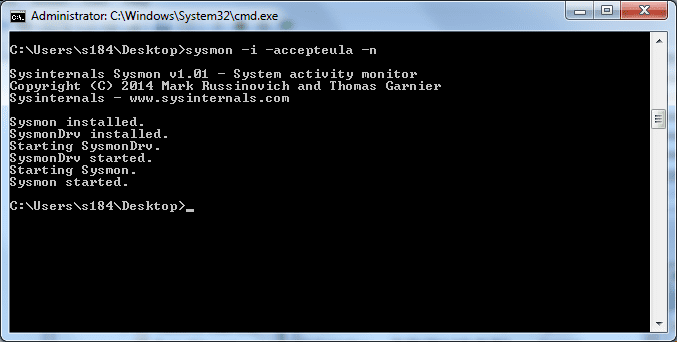

- SYSINTERNALS SUITE END OF LIFE INSTALL
- SYSINTERNALS SUITE END OF LIFE FULL
- SYSINTERNALS SUITE END OF LIFE PORTABLE
- SYSINTERNALS SUITE END OF LIFE WINDOWS 8.1
- SYSINTERNALS SUITE END OF LIFE DOWNLOAD
And although there’s a delay, it should only happen once per session, as Windows caches the folder’s contents for speedy access later.
SYSINTERNALS SUITE END OF LIFE DOWNLOAD
You don’t have to be looking for a Sysinternals program, either - it’ll just happen the first time Windows searches the path.īut it’s good, because it makes everything immediately accessible from the command line, without having to manually download or move any files. This is bad, because it takes a few seconds at the start of each session to connect to the server, and check the folder’s contents. The tools could be freely browsed, launched, or copied to local folders as required.Ī more dubious option is to add the \\\tools URL to your path (right-click This PC, select Properties > Advanced System Settings > Advanced > Environment Variables). We clicked "Finish" and the URL opened just like any other folder.
SYSINTERNALS SUITE END OF LIFE WINDOWS 8.1
To try this out, we right-clicked "This PC" on a Windows 8.1 system, selected "Map Network Drive" and entered in the Folder box. You’re not restricted to using a browser, either: can actually be mapped as a network drive in Explorer.
SYSINTERNALS SUITE END OF LIFE FULL
A directory listing displays the full set of Sysinternals programs, and all you have to do is click one, and choose the "Run" option rather than "Save".
SYSINTERNALS SUITE END OF LIFE PORTABLE
If you’ve built a portable environment, but don’t have it with you, another option is to point your browser at.
SYSINTERNALS SUITE END OF LIFE INSTALL
A front-end menu organizes everything, helps you find what you need, and can check for and install any updates on demand. This isn’t just about downloading the basic executables, either. The Windows System Control Centre takes this idea to the next level by giving you easy access to both Sysinternals and NirSoft tools. Unzip it onto a USB stick and you’re ready to go. The Suite leaves out a few non-troubleshooting applets, but nothing you’re likely to notice.

Change this to "asInvoker" and then your problem should be solved.One time-saving option is to download Sysinternals Suite, a one-stop bundle of all the main troubleshooting tools. I am thinking that its set to "requireAdministrator" because of which you are being prompted for elevation. What is the requested execution level in the application manifest for your executables? You can verify the requested execution level specified in the embedded manifest of your exectuable by making use of a tool from the Sysinternals suite called "sigcheck.exe". Requested execution levels specify the privileges required for an application. So, any child processes which are spawned from this msi package outside of the InstallExecute sequence will run with standard user privileges.įor an application to be UAC compliant, the application needs to specify the "requested execution level" in the application manifest. Hence, the msi package is being run with standard user privileges. In your case, I am assuming that the msi package is being installed from a non elevated command prompt. As a result, all applications run as a standard user unless a user provides consent or credentials to approve an application to use a full administrative access token. Explorer.exe is the parent process from which all other user-initiated processes inherit their access token. The standard user access token is then used to display the desktop (Explorer.exe).

The standard user access token is used to start applications. The standard user access token contains the same user-specific information as the administrator access token, but the administrative Windows privileges and SIDs are removed. When an administrator logs on, two separate access tokens are created for the user: a standard user access token and an administrator access token. Each application that requires the administrator access token must prompt the administrator for consent. i.e even if you are logged in as an administrator, any application that you run does not run with full administrative privileges. With UAC, applications and tasks always run in the security context of a non-administrator account, unless an administrator specifically authorizes administrator-level access to the system. I am guessing you are trying to launch these executables when the user clicks on the "Finish" button on the Installation Finished dialog. I am assuming that the executables are launched outside of the "Install Execute" sequence.


 0 kommentar(er)
0 kommentar(er)
